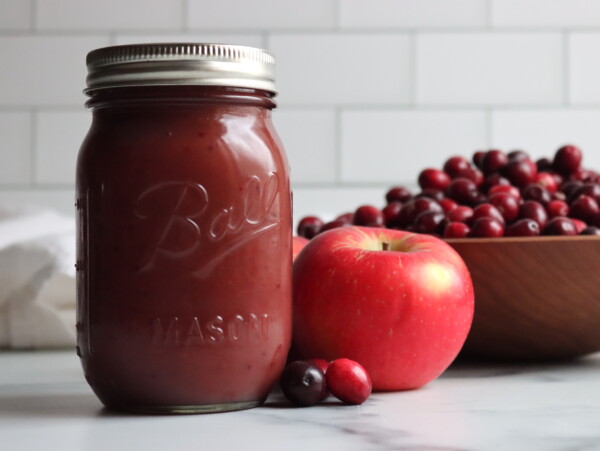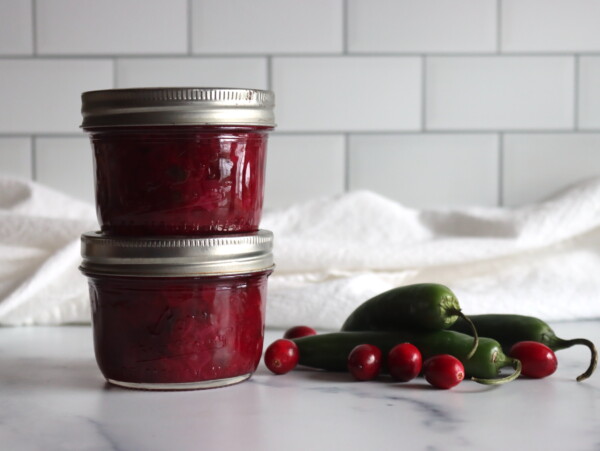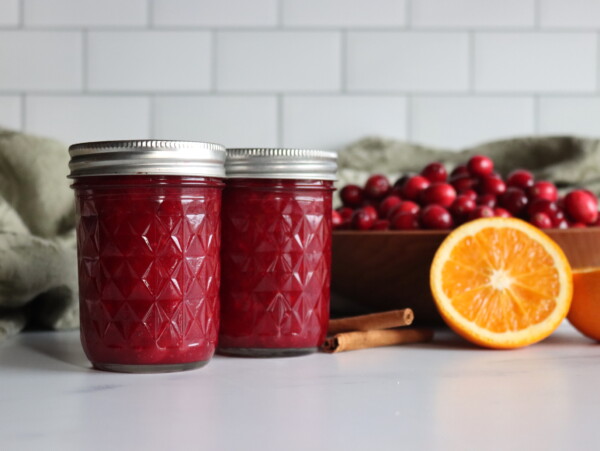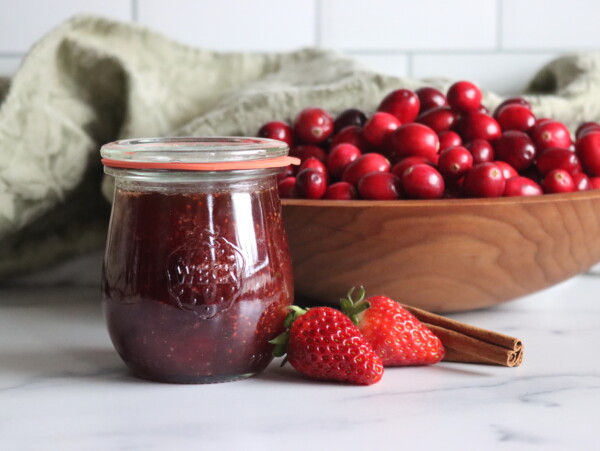This post may contain affiliate links. Please see our disclosure policy.
Cranberry jelly is a unique early winter preserve that’s full of flavor, and can be served on just about anything (savory or sweet). While the thickly sliced “jellied cranberry sauce” that slips out of a can only works next to Turkey on your holiday table, this versatile jelly can be spread on biscuits all winter long. It’s also delicious in thumbprint cookies, and it still works well on your holiday table next to Turkey as well!

These days, everyone’s all about the jellied cranberry sauce that slips out of a can for Thanksgiving dinner, and while I do agree that it does have a place, it’s not the only way to serve cranberry!
When you’re making a thick, sliceable jellied cranberry sauce, it’s made by simply pureeing whole berry cranberry sauce before it goes into the jar. You can make any recipe for whole berry cranberry sauce for canning, and then pulse it with an immersion blender before it goes into the jar. It will set up nice and thick, and provided it’s a straight-sided jar, it will slip right out as a loaf onto a plate.
But what if you don’t want a loaf of cranberry sauce? What if you want a delicious cranberry jelly instead?
Well then, instead of pureeing the mixture, you’re going to make it as you would any other jelly, simple as that.
The fruit are first cooked, then strained through a jelly bag, and the pectin-rich juice is finally cooked with syrup until it sets up. The result isn’t nearly as firmly set as “jellied cranberry sauce,” but it also doesn’t have seeds and skins from the cranberries, so it’s silky smooth and less abrasive (as cranberry skins are where some of the bitter and incredibly acidic flavors in cranberry sauce come from).
What you have instead is a smooth, spreadable jelly that’s perfect on biscuits or toast, and also works well slathered on your holiday turkey. This preserve can do both!
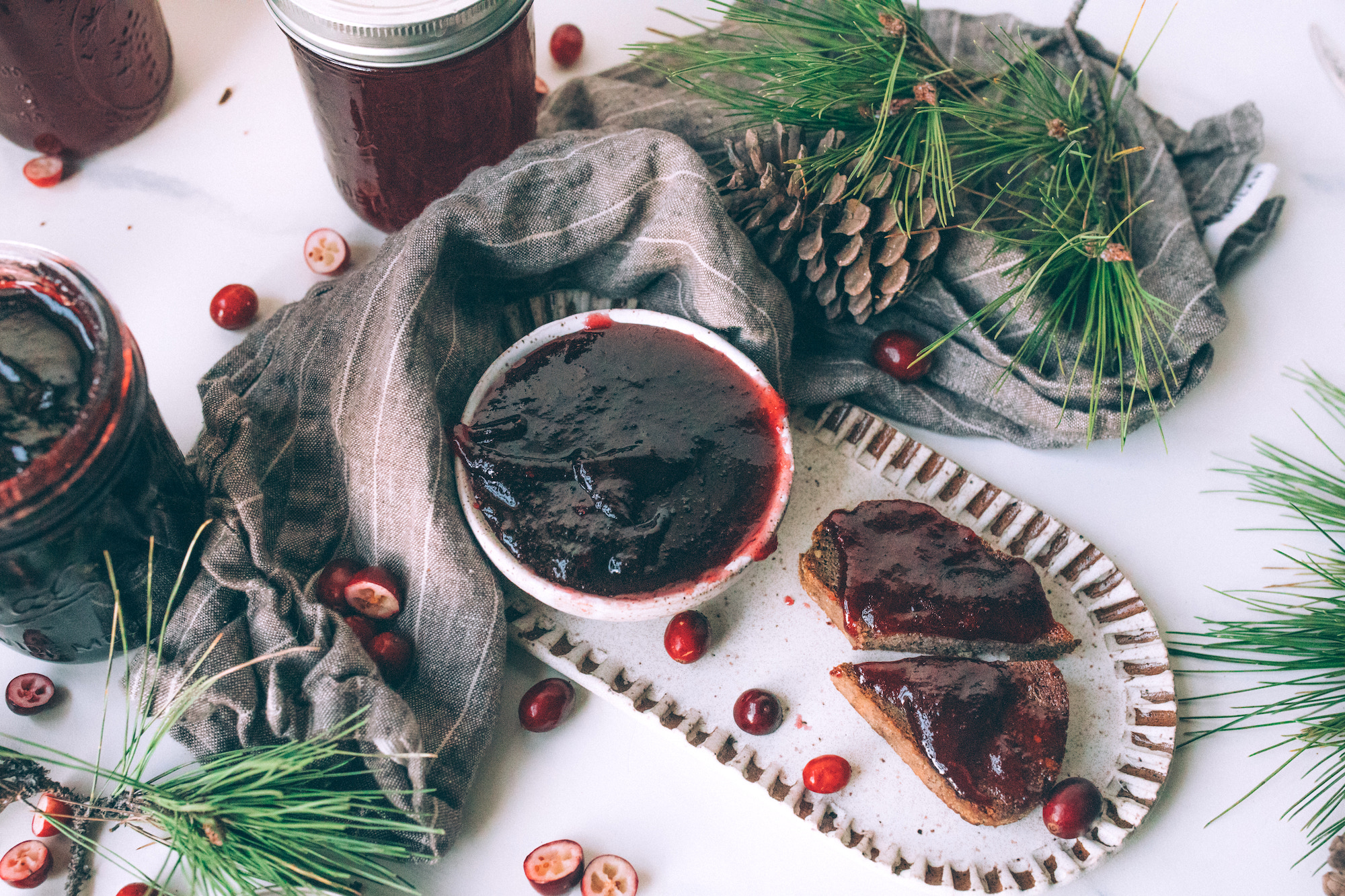
Ingredients for Cranberry Jelly
Cranberries make excellent jelly because of their unique tart taste. This recipe uses sugar to soften the tartness of the cranberries, and there is no added pectin since cranberries are rich in pectin.
This recipe makes a small batch of jelly, but you can double the recipe if you want to make a larger batch, but don’t increase it more than double (for 4 half-pint jars) as the jelly might not set.
For a small batch of 2 half-pint (8-ounce) jars of jelly, you need:
- 6 cups (680 grams) fresh whole cranberries (two 12 oz bags as purchased)
- 2 cups water
- 1 Tbsp. lemon juice, optional
- 2 ¼ cups sugar*
The amount of sugar you will use in this recipe is slightly more than the standard one-to-one ratio many jelly recipes use. In this recipe, for every 2 cups of cranberry juice, you will add 2 ¼ cups of sugar.
You might want to add some bottled juice to the cranberry juice you will be making if your cranberries don’t produce 2 whole cups of liquid. Generally though, this recipe should produce slightly more than 2 cups of cranberry juice. Adjust the recipe accordingly, and either add slightly more sugar, or save the extra cranberry juice for another recipe.
With Frozen Cranberries
This recipe calls for fresh whole cranberries because freezing fruit dramatically decreases the pectin. After a week in the freezer, cranberries have lost about half their pectin and they won’t set nicely without added boxed pectin. If you are using frozen cranberries, you can still make the jelly, but you will need to add 1 box (1.75 oz) of standard powdered pectin (like sure jel) to every 4 cups of juice.
The order of operations is a bit different when working with pectin.
Extract the juice from the cranberries as you otherwise would. Doubling the recipe will help you get to 4 cups juice, or alternately, you can use half a box of pectin (3 tbsp) and work with just 2 cups juice. Pour the juice into a saucepan or jelly pan, and then stir in the pectin until fully dissolved (but don’t add the sugar yet). Bring the mixture to a hard rolling boil and boil for 1 minute.
Next, add the sugar and return the mixture to a boil for 1 minute.
Ladle the jelly into prepared jars, leaving 1/4 inch headspace, and proceed with canning, or freezing, depending on your preference.
With Bottled Cranberry Juice
If you don’t want to extract the juice from fresh cranberries, you can use already-pressed juice. Be sure it’s 100% juice without added sugar, as most cranberry juices in the grocery store are mostly corn syrup, with no more than 10% juice. Don’t use sweetened cranberry juice or cranberry juice cocktail that contains sugar or corn syrup. Look for just cranberry juice, which is often in the health food section.
R.W. Knudsen makes a bottled 100% cranberry juice that I’ve used in the past, and it works wonderfully.
Next, proceed with pectin as you would using the instructions above. Bottled cranberry juice won’t have enough pectin to set on its own, so you’ll need to use pectin as you would if you’re working with frozen cranberries.

How to Make Cranberry Jelly
Carefully pick through the cranberries you have and remove any cranberries that are overripe or shriveled. If you have cranberries showing brown spots, discard those as well. You want to use only quality cranberries in your jelly, and overripe fruit can cause jelly not to set.
After you have picked through your cranberries, rinse them under clean water, then place them in a medium-large saucepan or jelly pot.
Add 2 cups of water and 1 tablespoon of lemon juice to the cranberries, and cook over medium-high heat.
Bring the cranberry mixture to a boil, then reduce the heat to medium-low, allowing the cranberries to simmer. Cover and simmer for 10 to 15 minutes or until the cranberries have popped and softened. Frozen cranberries may soften sooner than fresh cranberries.
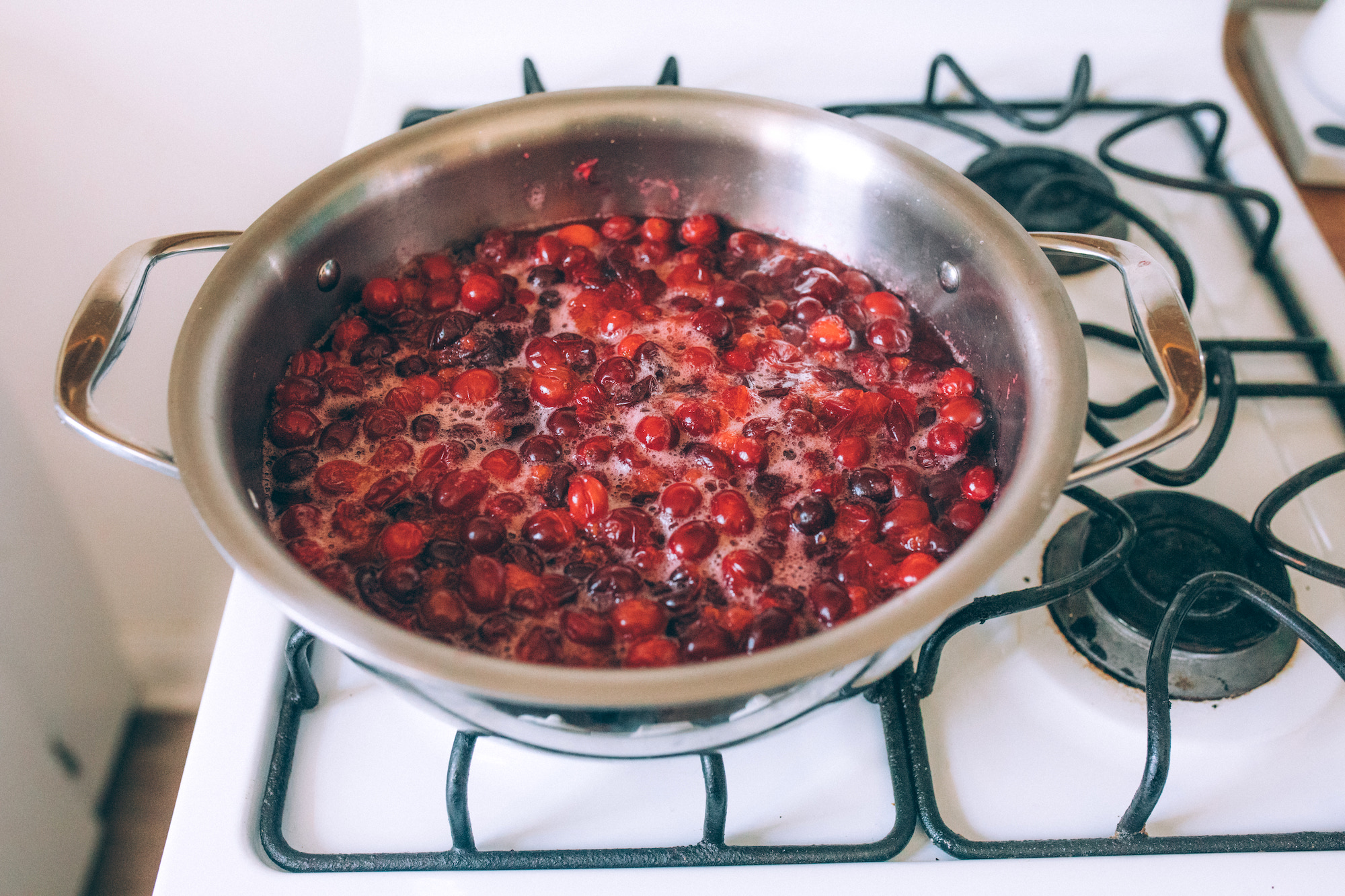
Using a potato masher or large spoon, mash the berries well, making sure every cranberry has popped open.
Using a jelly bag, carefully pour the cranberry mixture into the bag, allowing the cranberry juice to run through.
You may also use a fine sieve or a strainer with several layers of cheesecloth inside to ensure the cranberries’ pulp does not come through into your juice.
Let the cranberry mixture sit for several hours or overnight until the dripping has slowed considerably.
Typically, you do not want to squeeze the bag or the cheesecloth to extract more juice, and there should not be any pulp from the cranberries in the liquid to make clear red cranberry jelly.
If you use cheesecloth and don’t use enough layers, you may get some pulp from your cranberry mixture into your juice. That will not harm the flavor, but your finished jelly may be a little cloudy.
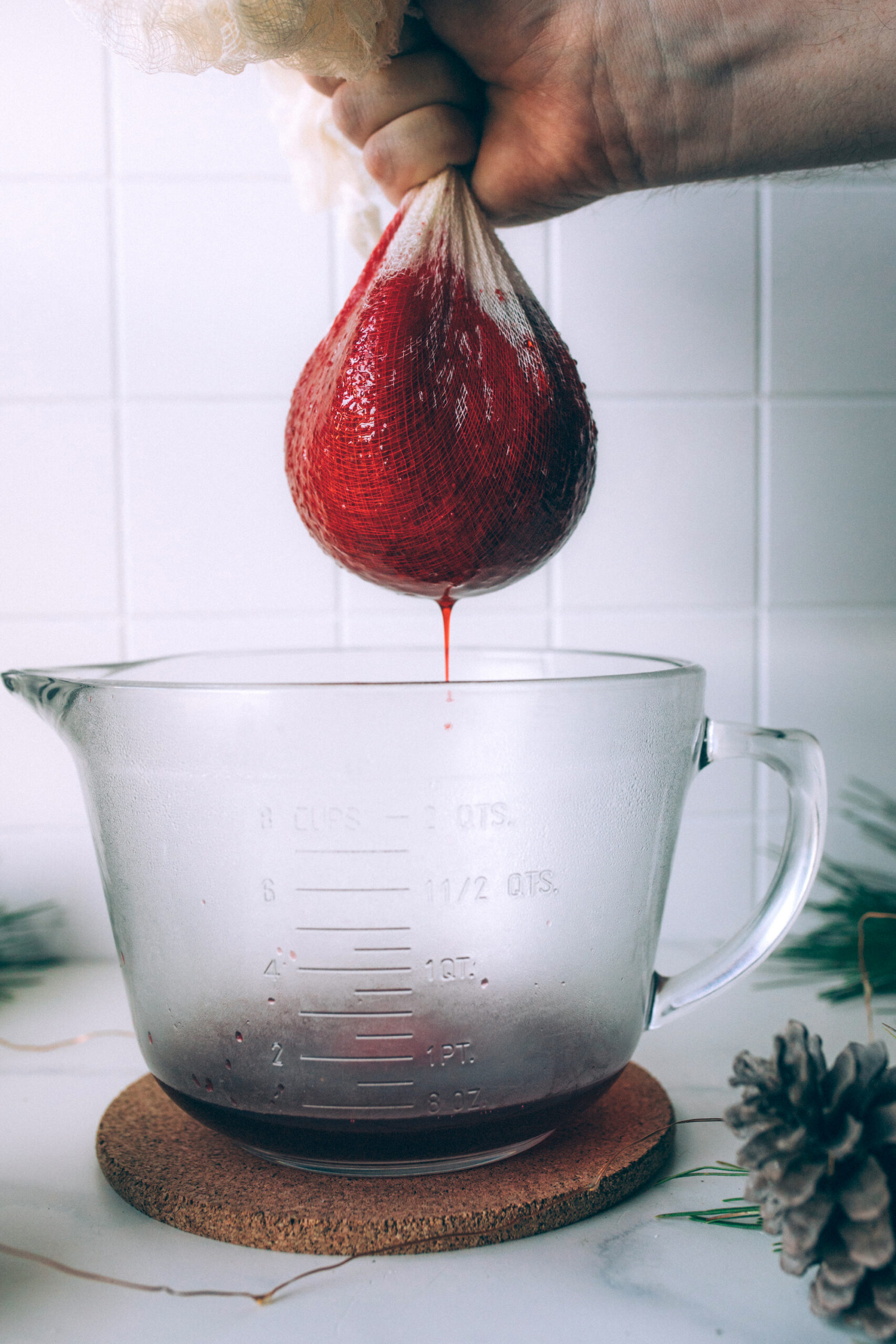
Measure the juice you extracted from the cranberries, and calculate the sugar you need. It is slightly more than a 1-1 ratio. Add 2 ¼ cups of sugar for every 2 cups of juice.
If you cannot extract 2 cups of cranberry juice from your mixture, add bottled juice to the extracted liquid to make 2 cups. This recipe should yield slightly more than 2 cups of liquid, so that shouldn’t be an issue.
If you have more than 2 cups of juice, multiply the amount of liquid you have by 1.125, and that will tell you the amount of sugar to add. Or, save the extra cranberry juice for another recipe, your choice.
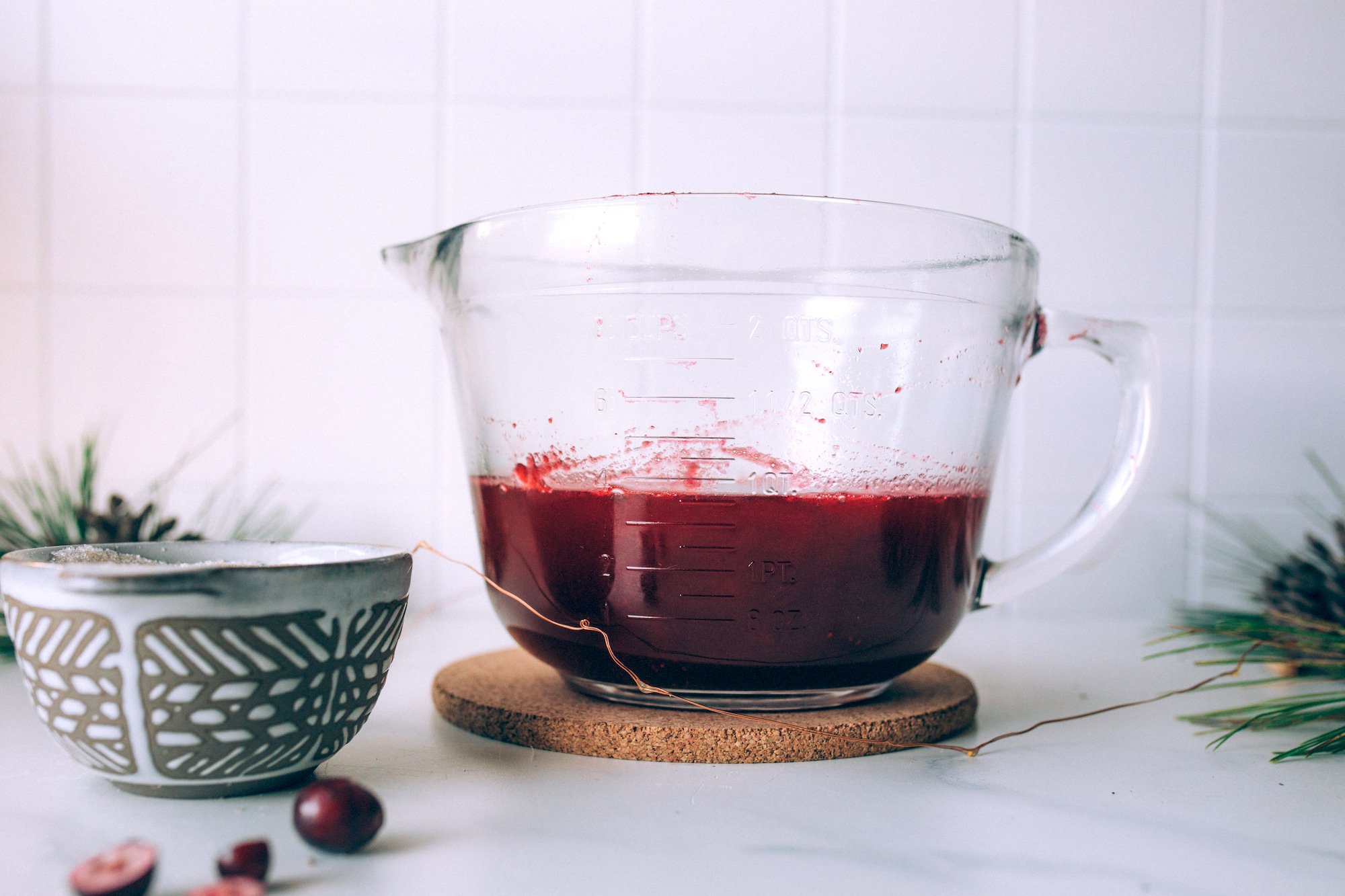
Pour the juice and the sugar into a medium saucepan or jam pot, and place the pan over medium-high heat.
Stir the liquid until the sugar is completely dissolved.
Continue to cook the cranberry mixture, bring it to a hard boil, and continue to boil for 10-15 minutes, or until it has reached 220 degrees Fahrenheit on a candy thermometer. If you don’t have a thermometer, you can also test for set on a plate that’s been chilled in the freezer.
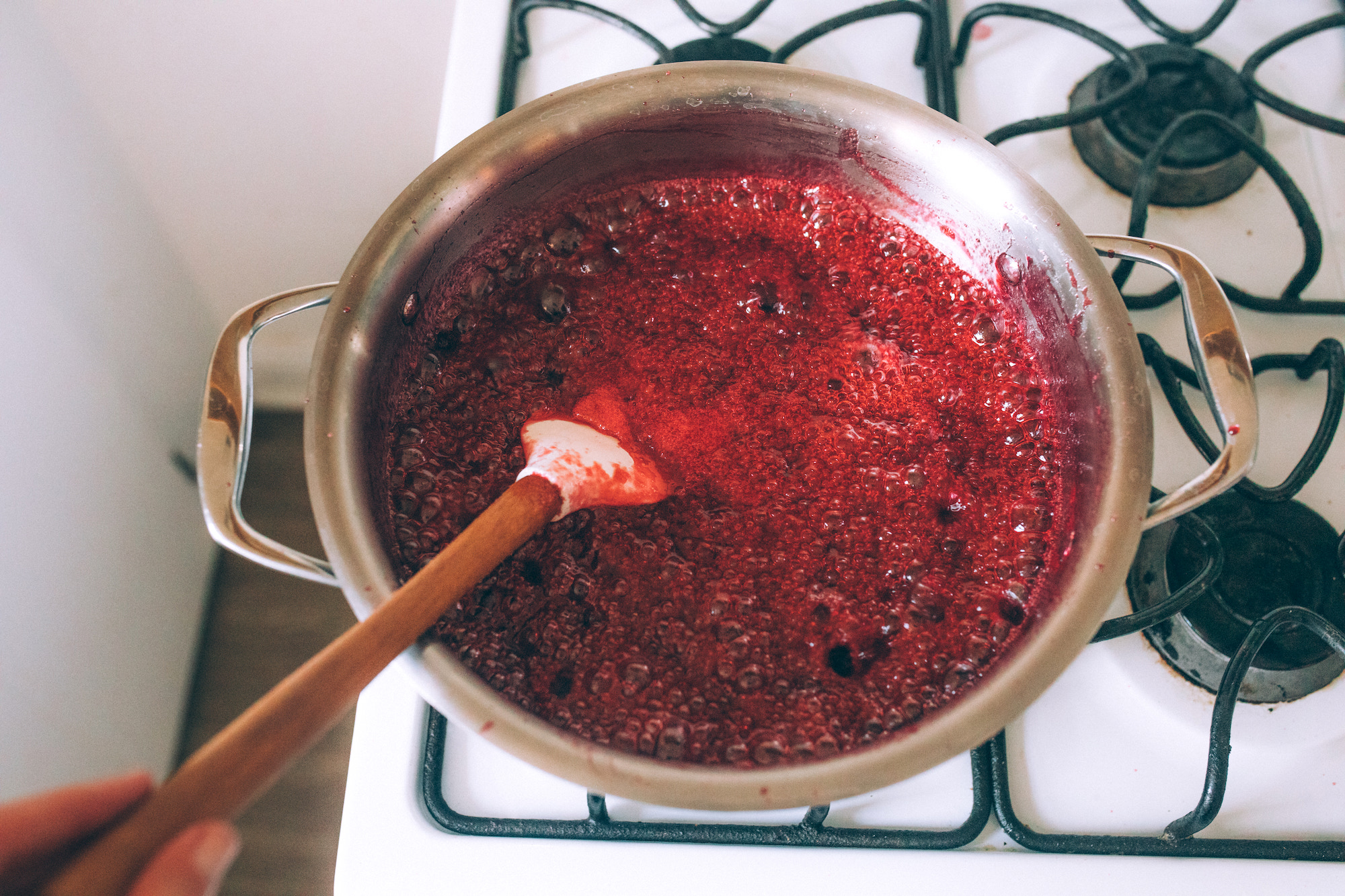
Your jelly may start to thicken before it reaches 220 degrees if your cranberries have a lot of pectin in them. If this is the case, you can stop boiling when the jelly is thickening.
Carefully ladle or pour the mixture into your prepared hot jelly jars, leaving ¼ inch of space at the top of each jar.
Wipe the rim of the jars with a clean cloth, and using 2-part canning lids, place the lid on the jar and then screw on the ring, tightening only until finger-tight.
If canning, proceed to the canning instructions below. Otherwise, for a refrigerator or freezer preserve, let it sit undisturbed on the counter for 24 hours or until the jelly has set. Store this jelly in the refrigerator for up to 1 month, or keep it frozen for up to 6 months.
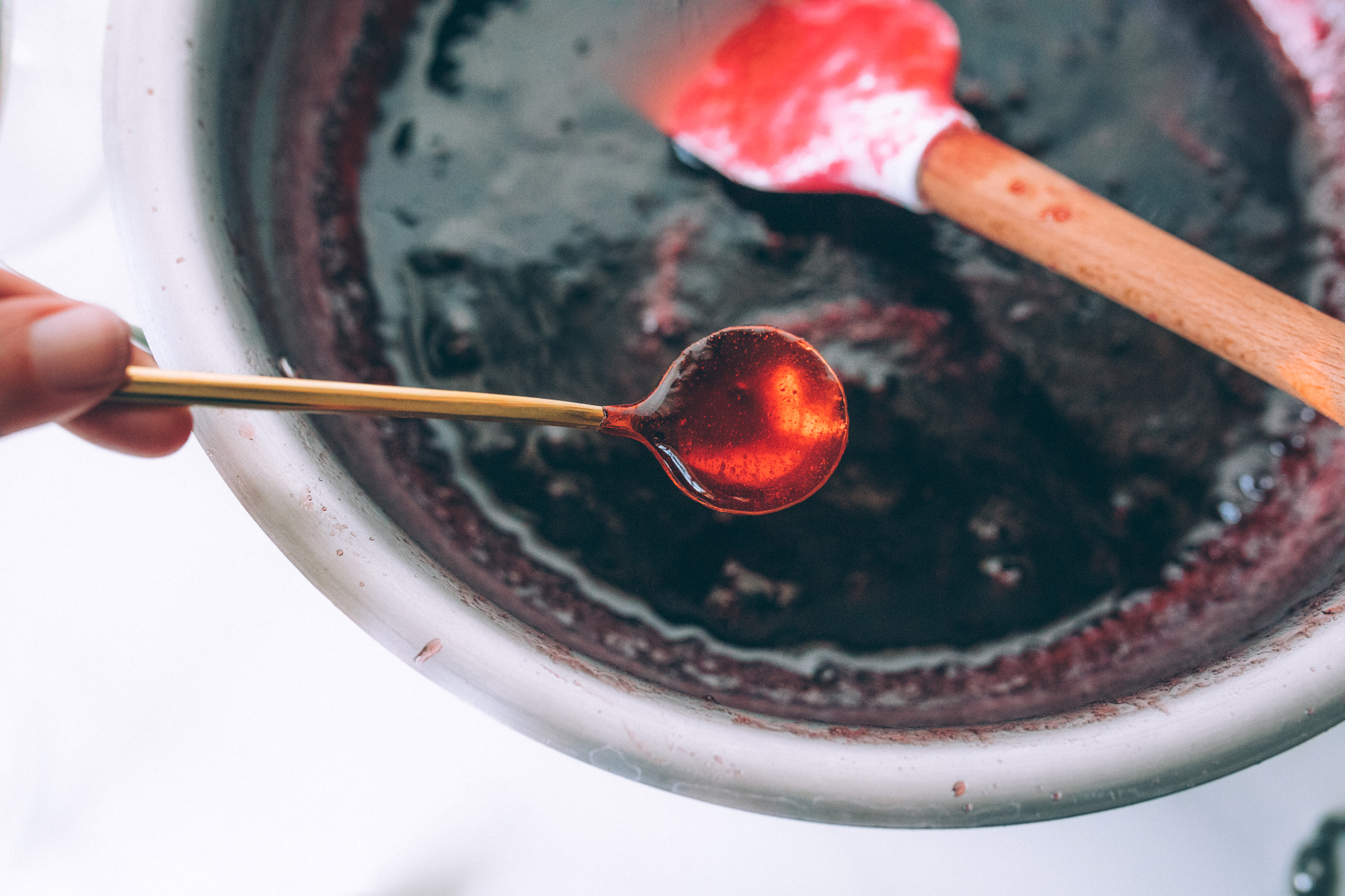
Canning Cranberry Jelly
If you are a beginner or novice canner, please read my beginner’s guide to water bath canning for detailed canning instructions, including the supplies you will need.
Once your jelly is ready, ladle or pour the jelly into hot jelly jars, leaving ¼” headspace at the top.
Use a clean cloth to wipe the rim before you place the lid on the jar, then screw on the canning rings until “finger tight.”
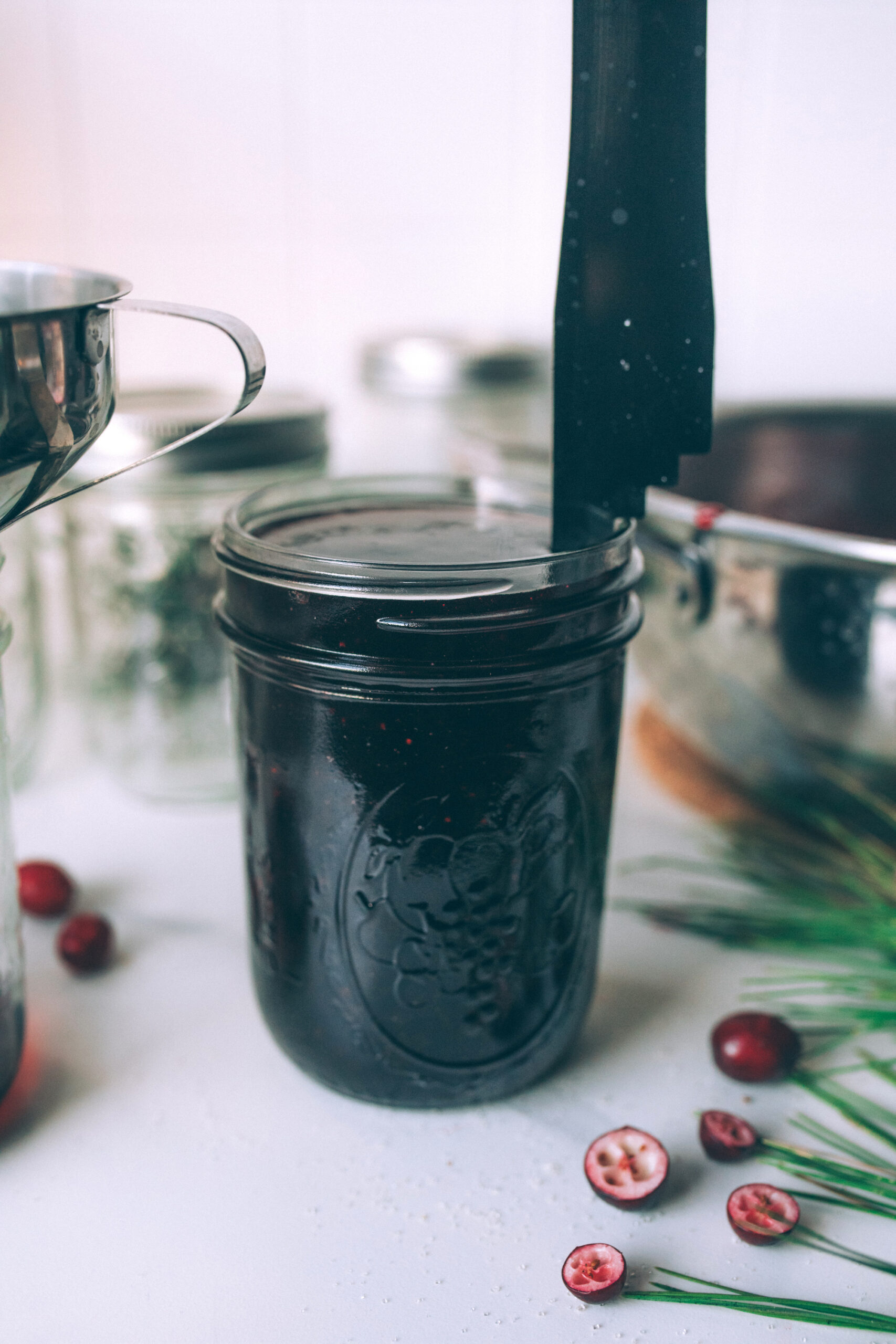
Place the jelly jars into the prepared hot water bath canner using a jar lifter.
Return the water to a boil, and process the jars for 10 minutes in the boiling water (or 15 minutes if above 6,000 feet in elevation).
After your timer goes off, turn off the heat and allow the jars to sit in the canner water for an additional 5 minutes.
Remove the jars using the jar lifter, and place the hot jars on a towel on the counter, leaving some air space between them as they cool.
Let the jelly sit undisturbed for 24 hours, and then check the seals. Any unsealed jars may be stored in the refrigerator and used within a month.
Store sealed jars of jelly in your pantry or a cool, dry place. They will maintain quality for 18 months (or longer if they stay sealed), but store opened jars in the refrigerator.
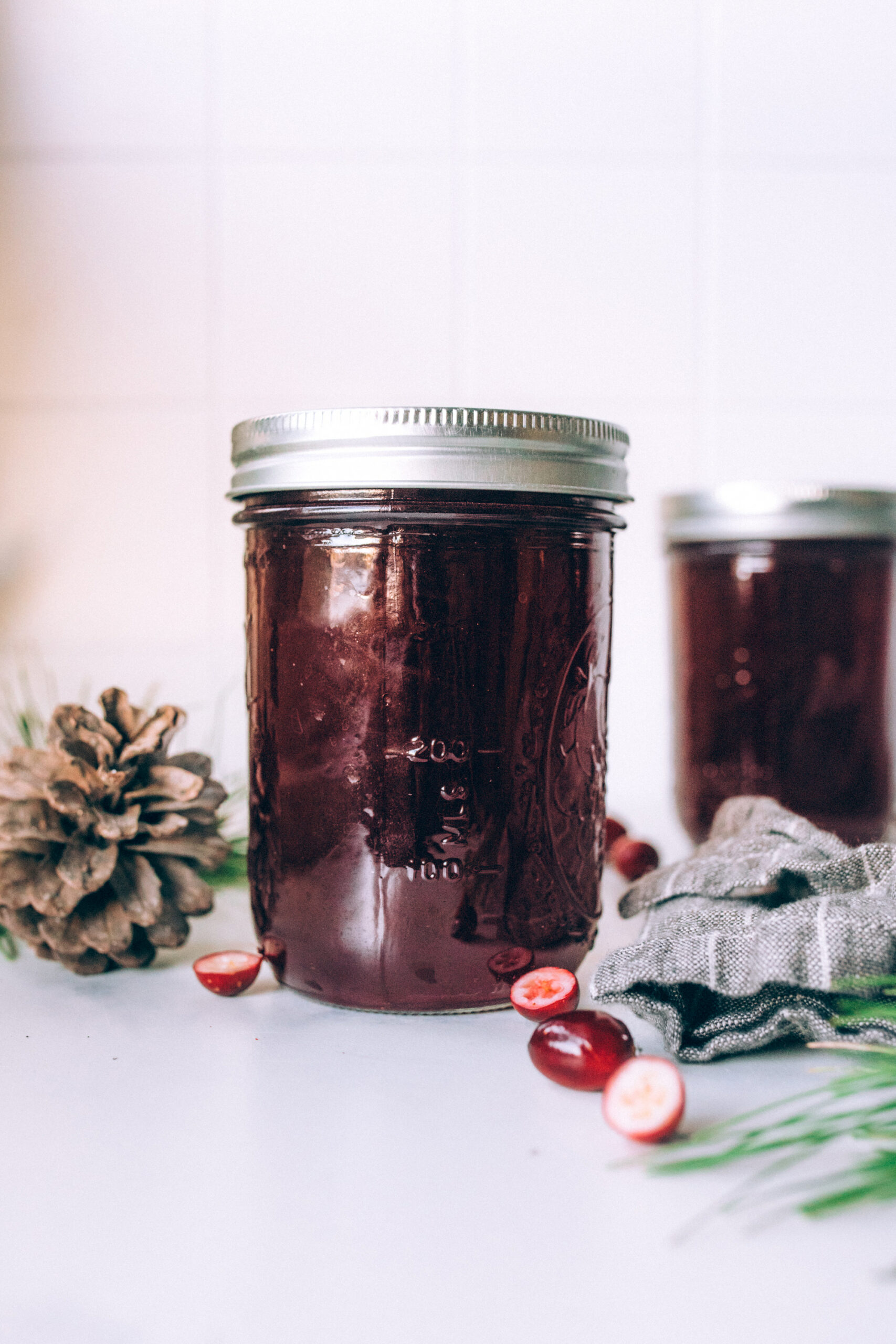
Cranberry Jelly Variations
There is a multitude of other fruit flavors that blend very well with cranberry. You may have noticed the wide variety of cranberry juice flavor combinations in a grocery store.
Personally, I love the flavor of cranberries and raspberries. It is easy to add raspberries to the cranberries as you cook them with lemon juice and water, and they will soften up and turn mushy along with the cranberries. You mash the mixture, strain the liquid through a jelly bag, and use the same calculation for sugar. This makes a tart and sweet combination of jelly that is great any time of the year.
You can also use apples, grapes, currants, peaches, oranges, pineapple, or other fruit combinations with cranberries. I’d suggest sticking with 6 cups of cranberries, and then adding about 2 cups of other fruits (fresh or frozen) when extracting the juice.
Add some spice to your cranberry jelly with cinnamon, nutmeg, or even a little cayenne pepper for some subtle heat.
The cranberries are where the majority of the pectin comes from, so you can only add a small amount of other fruits to the juice and still get the mixture to set. Alternatively, you can use a box of pectin to help it set, if you cant to add quite a bit of other fruit to the mix.
Ways to Use Cranberry Jelly
Cranberry jelly is traditionally served with meat like poultry or pork, adding a tart zing to the flavor of the meat.
Scones are also excellent served with cranberry jelly, which is also delicious on croissants or English muffins.
Muffins like apple cinnamon or bran are also great when served with cranberry jelly.
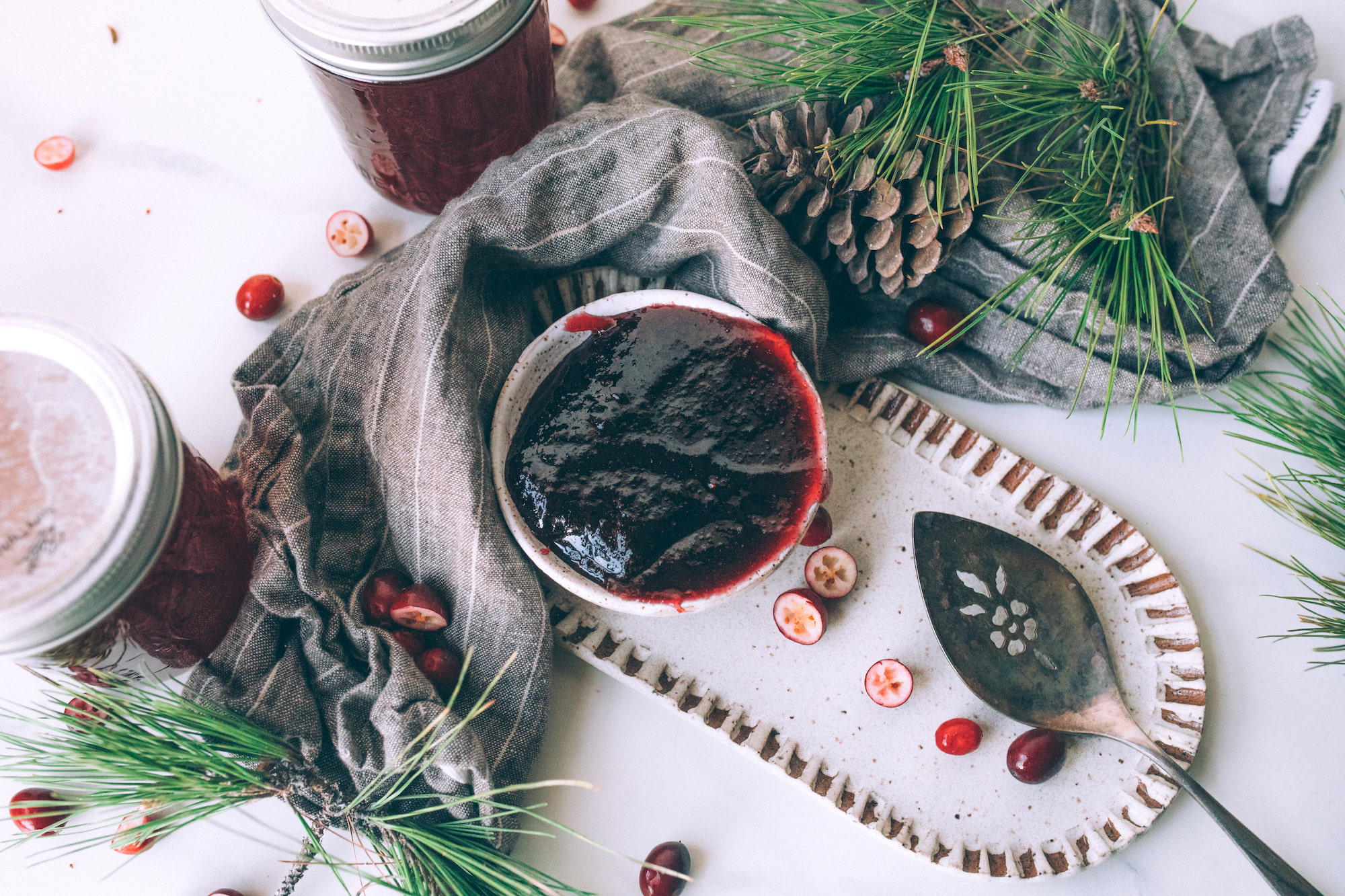
Cranberry Canning Recipes
There are so many cranberry canning recipes out there, this is just the beginning!
- Canning Whole Cranberries in Syrup
- Canning Cranberry Juice (Two Ways)
- Canning Cranberry Sauce
- Christmas Jam with cranberries, strawberries, orange, and warm spices.
Ways to Preserve Cranberries
Canning isn’t the only way to put up cranberries!

Cranberry Jelly
Ingredients
- 6 cups cranberries, fresh, whole, two 12 oz bags as purchased (see notes for frozen)
- 2 cups water
- 1 Tbsp. lemon juice
- 2 ¼ cups sugar
Instructions
- Place clean, fresh or frozen cranberries in a medium saucepan and add water and lemon juice.
- Place the pan on the stove on medium-high heat and bring the mixture to a boil.
- Reduce the heat to medium-low, cover, and simmer for 10 to 15 minutes.
- Remove the pan from the stove and use a potato masher or heavy spoon to mash the berries, ensuring all the cranberries have popped open.
- Carefully pour the cranberry mixture into a jelly bag and let it sit for several hours or overnight until the juice has stopped dripping. Use several layers of cheesecloth and a strainer if you do not have a jelly bag.
- If canning, prepare a water bath canner, jars, and lids before you start working with the extracted juice to make the jelly.
- Measure the amount of liquid you have, then measure the appropriate amount of sugar. If you do not have 2 cups of liquid, add bottled juice to obtain 2 cups, and measure 2 ¼ cups of sugar.
- If you have more than 2 cups, multiply the amount by 1.125 to determine your needed sugar.
- In a medium saucepan or jam pot, stir the cranberry juice and sugar until the sugar is dissolved, and cook on medium-high heat, bringing it to a full boil, stirring often.
- Continue to boil the mixture for 10-15 minutes or until it reaches 220 degrees Fahrenheit on a candy thermometer.
- Pour the hot jelly into prepared jelly jars using a canning funnel, leaving ¼" headspace, then wipe the rims of the jars with a clean cloth.
- Secure lids to the jars and continue the canning process using the hot water bath method. Process jars for 10 minutes, or 15 minutes if above 6,000 feet in elevation.
- If you do not plan on canning your jelly, leave the jars to cool on the counter for 24 hours or until the jelly has set.
- Jelly that has not been canned should be stored in the refrigerator for up to 1 month or in the freezer for six months. Jelly that has been processed and sealed using a canning method can be stored in a cool, dry place, where it will maintain quality for 18 months. For all jelly, refrigerate once opened.
Notes
With Frozen Cranberries
This recipe calls for fresh whole cranberries because freezing fruit dramatically decreases the pectin. After a week in the freezer, cranberries have lost about half their pectin, and they won't set nicely without added boxed pectin. If you are using frozen cranberries, you can still make the jelly, but you will need to add 1 box of standard powdered pectin (like sure jel) to every 4 cups of juice. The order of operations is a bit different when working with pectin. Extract the juice from the cranberries as you otherwise would. Doubling the recipe will help you get to 4 cups juice, or alternately, you can use half a box of pectin (3 tbsp). Pour the juice into a saucepan or jelly pan, and then stir in the pectin until fully dissolved (but don't add the sugar yet). Bring the mixture to a hard rolling boil and boil for 1 minute. Next, add the sugar and return the mixture to a boil for 1 minute. Ladle the jelly into prepared jars, leaving 1/4 inch headspace and proceed with canning, or freezing, depending on your preference.With Bottled Cranberry Juice
If you don't want to extract the juice from fresh cranberries, you can use already-pressed juice. Be sure it's 100% juice without added sugar, as most cranberry juices in the grocery store are mostly corn syrup, with no more than 10% juice. Don't use sweetened cranberry juice or cranberry juice cocktail that contains sugar or corn syrup. Look for just cranberry juice, which is often in the health food section. Next, proceed with pectin as you would using the instructions above. Bottled cranberry juice won't have enough pectin to set on its own, so you'll need to use pectin as you would if you're working with frozen cranberries.Nutrition
Nutrition information is automatically calculated, so should only be used as an approximation.
Winter Canning Recipes
There are still plenty of ways to keep your canning pot rocking in the winter months!
- Canning Quince
- Apple Jam
- Sweet Cider Apple Butter
- Pear Butter
- Caramelized Onion Jam
- Pear Jam
- Butternut Squash and White Bean Soup
Old Fashioned Jelly Recipes
Love making jelly the old-fashioned way, with no added pectin? Just sugar, fruit, and a little bit of love in each jar…

